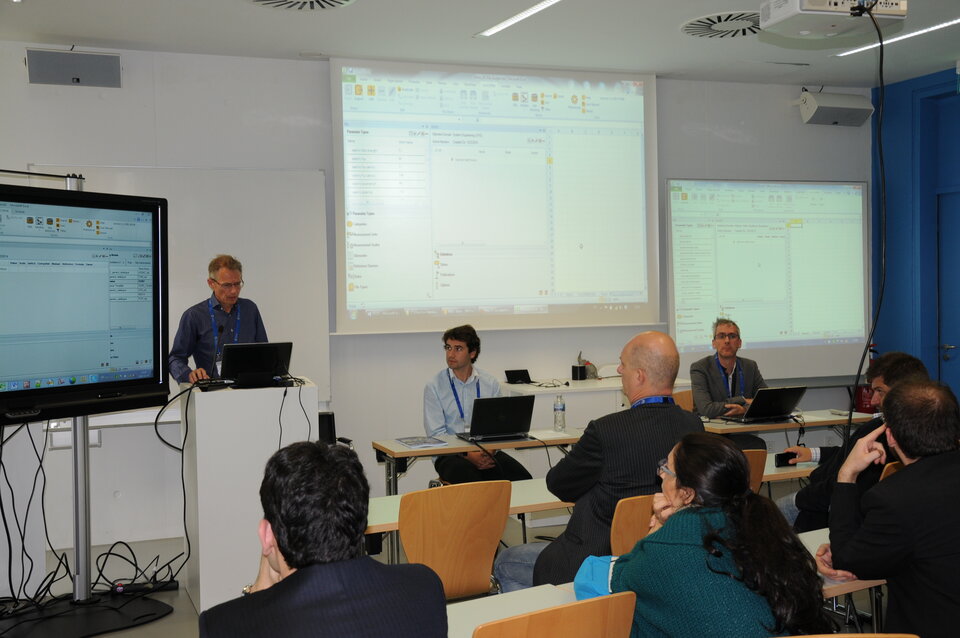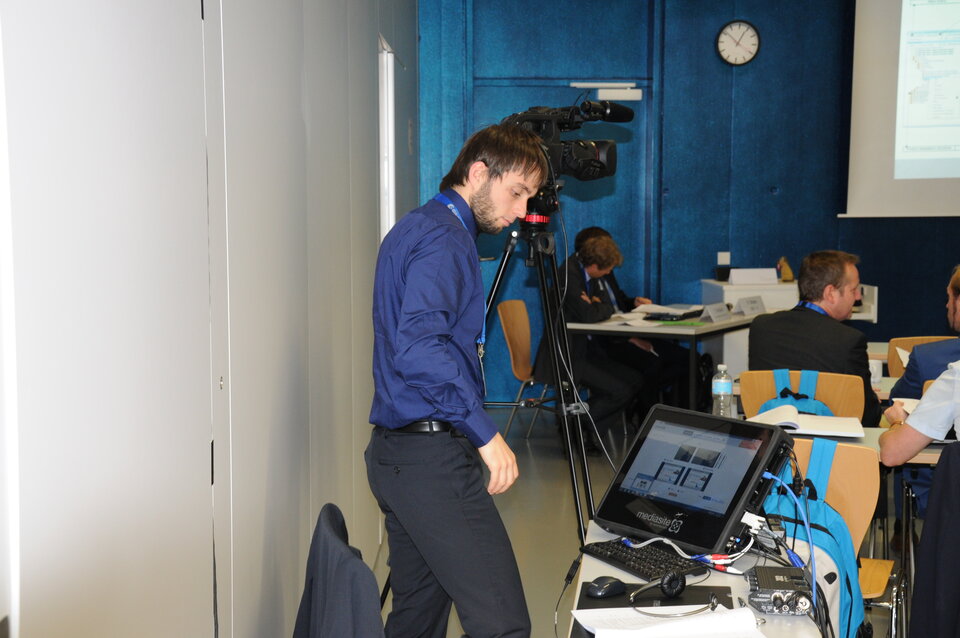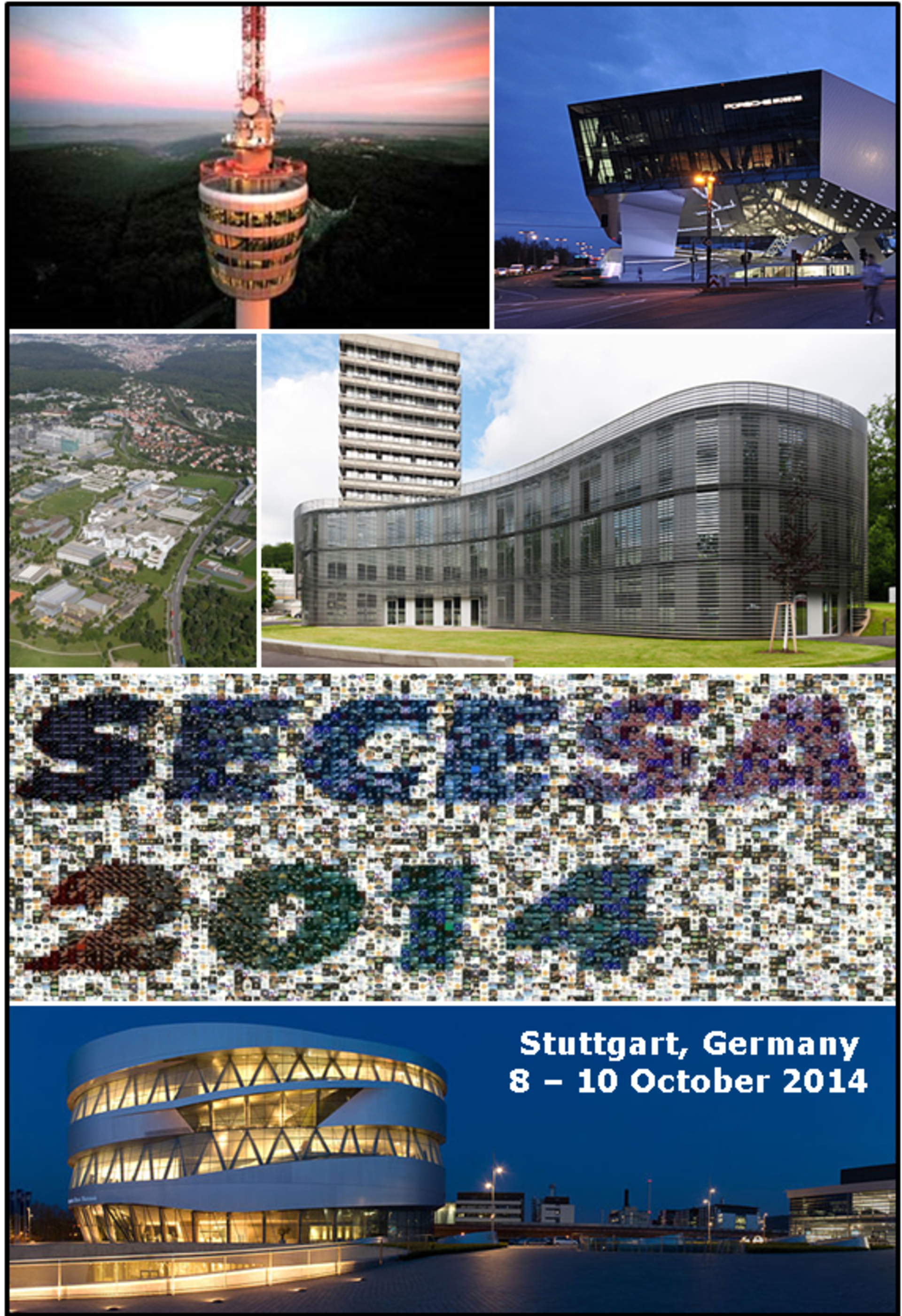SECESA 2014
The 6th International Systems & Concurrent Engineering for Space Applications conference, (SECESA 2014) organised by the ESA Directorate for Technical and Quality Management and the Concurrent Design Facility, in partnership with the Institute of Space Systems (IRS) of the University of Stuttgart and the German Space Agency DLR, was hosted in Germany on 8-9-10 October 2014.
Once again the conference has proved to be very popular, attracting more than 100 participants, including practitioners, system engineers, project managers and students* during 3 days packed with presentations, demonstrations and debates.
As with previous SECESA conferences the programme was based on technical sessions dedicated to a set of topics proposed by a Technical Committee of 24 members, where challenges, findings and lessons learned associated with CE and SE are interspersed with inspiring keynote speeches. The whole conference has been recorded and individual presentations can be found at the following link: http://esa.mediamission.nl/Mediasite/Catalog/catalogs/SECESA2014or http://goo.gl/l5uMkF.
The Conference Opening Speeches were given by Prof.Dr.-Ing. S. Fasoulas, Director of the Institute of Space Systems (IRS), followed by Prof. Dr. H. Dittus, DLR Executive Board Member for Space Research and Technology and by F. Ongaro, Director of Technical and Quality Management (D/TEC), and Head of ESTEC in Noordwijk, the Netherlands.

Session 1 was devoted to CE Facilities; Technical Challenges, Educational Perspectives and Human Factors and included presentations ranging from pioneering CE in the Russian Federation to operating a CDF beyond early design phases. The session finished with a humorous look at the human side of CE with a presentation titled “The Dark Side of Concurrent Design – A Story of Improvisations, Workarounds, Nonsense and Success” and is well worth a browse of the mediasite link. Session 2 was titled “OCDT: Deployment, Exploitation and First Experiences” and was mainly related to the very much awaited deployment and operation of the Open Concurrent Design Tool (OCDT) and its applications to the community.
Session 3 was given over to innovative tools for the support of SE & CE and was interspersed with a keynote speech from Prof. Johann- Dietrich Wörner the Chairman of the Executive Board of the German Aerospace Centre (DLR) titled “Planes, Ships and Space Ships” which gave a flavour of the development work into model based system engineering within DLR.

Following the keynote speech there were a further four presentations on the importance of tools, lessons learned databases, simulation software, environmental considerations, in support of systems engineering activities.
Two demonstrations enriched the 1st conference day, gathering 2 groups of circa 25 people. The OCDT software was presented by the ESA CDF team and a very interesting demonstration was given by the University of Stuttgart of their automated design language used to translate requirements directly into design applications. Part of the demonstration showed how - by using their automated design language - it was possible to carry out electrical harness design for aircraft in a fraction of the time normally devoted to this item.
The day was concluded by a wrap-up and by an ad-hoc meeting of the CDUB (Concurrent Design User Board) which is the board recently created to provide governance of tools, models and standards shared by the community.
Day 2

Day 2 started with a very early additional OCDT Demo followed by a conference split into 2 parallel sessions, session 4 devoted to SE&CE Methodologies and Theories and session 5 concentrating on Uncertainty Management, Multi-Design Optimisation and Interoperability. Following on from lessons learnt in previous workshops, this year we got round the problems associated with split sessions by recording both sessions (video and presentation slides) and uploading the data to a server accessible by all the participants. In this way if you missed a presentation you can always view it later over the internet!
The speakers were many and varied coming from industry, academia and agencies both within Europe and from as far afield as China, Brazil and the USA. In fact the breakdown of authors and their countries of origin are shown in the image.

The keynote speech for day 2 was from Mme. Yolande Martinet, Head of Lean Implementation for Space Systems at Airbus Defence & Space – Space Systems. Her speech was about the introduction of LEAN approaches into early design phases and describing how Lean principles, concretely implemented in manufacturing, could find suitable applications in the first design stages.
As part of day 2 there was also the social event of the conference, which started with a guided tour round the Mercedes museum in Stuttgart (although a few delegates somehow managed to go round the Porsche museum instead!!) followed by an Aperitif offered by RHEA Group to the SECESA 2014 Participants and a gala dinner at Pier 51 restaurant. Massimo Bandecchi also took this opportunity to announce the selected candidate, which will host next SECESA edition. Of the 4 applicants the chosen venue for SECESA 2016 is the Universidad Politecnica de Madrid (UPM), Aerospace Engineering (Escuela Tecnica Superior de Ingenieria Aeronautica y del Espacio)UPM .
Day 3

Friday started also with 2 parallel sessions, session 6 dealing with SE&CE Practices and Applications, while session 7 discussed MBSE – From Document Management to Verification. Session 6 contained some very interesting talks on real studies and identified good practices as well as lessons learned that could be applied to many projects and by many organisations. There were also presentations on new ways of approaching design reviews, introducing CE principles to minimise number of RIDs and having a tool to manage them more effectively. Also methods and models to assess requirement satisfaction were proposed to the audience . Session 7 was more focussed on how we record, manage and verify what we do in our daily engineering activities and how this feeds back into the design process and included presentations from Thales Alenia Space, Airbus Defence and Space, DLR, and ended with an interesting presentation from Keerthi Narayana from Thales Alenia Space on the lessons learnt from the EGNOS and Galileo assembly, integration, test and validation process, which is of course at the opposite end of the early design phase where CE is traditionally applied.
After lunch, a keynote speech from Mrs. Kelley Case, Concepts Design Methods Chief at NASA JPL Innovation Foundry, gave us all an insight into how the well known JPL Team X approach has extended into a new Team A, which looks at earlier development of trade space exploration and also to later concept maturation of Team X study results, i.e. Phase A. Kelley explained how this was a developing process within JPL and how the process is designed to mature over the next several years. We await the next installment with bated breath.

There was also a permanent poster session in the lobby of the IRS Conference Centre and during the planned networking and coffee breaks and lunchtimes many delegates could be found discussing the content of the posters with their authors, while enjoying the coffee and pretzels laid on by the hosting university.
The conference finished with a broad ranging discussion about the subjects explored in the three days sessions and the agreement to..... meet again in two years in Madrid, for SECESA 2016!
___________________________________________________________________________________________________________________________________________________
* Since SECESA 2008 the Workshop has been held at European Universities’ premises, with academia hosting the venue and acting as co-organiser. This has offered the opportunity to local institutional entities and companies to create a network with ESA and with the European industry, as well as making it possible for students to participate in the Technical Sessions of the conference. Bringing SECESA to Universities also accomplishes one of the objectives of the Agency, which is to inspire young people in gaining and maintaining interest in science and technology.
MediaSite Link: http://esa.mediamission.nl/Mediasite/Catalog/catalogs/SECESA2014or http://goo.gl/l5uMkF.


